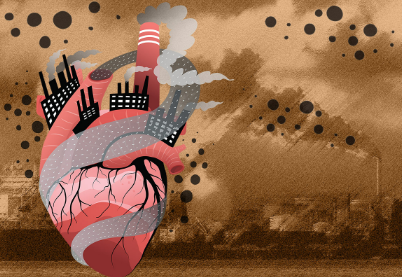
Climate change isn’t just an environmental challenge — it’s a growing threat to human cardiovascular health. Recent research shows that the combination of extreme temperatures, polluted air, and climate-driven stressors is significantly elevating the risk of heart attacks and other heart-related illnesses globally.
Around the world, heatwaves are becoming more frequent, intense, and prolonged due to a warming climate. High temperatures force the body to work harder to cool itself, increasing heart rate, dehydration, and blood viscosity — all of which strain the cardiovascular system. Similarly, sudden cold spells can constrict blood vessels, raise bloo... Read more

Recent flash floods across the towns and cities in the lap of Himalayan region brought forth destruction, devastation and disaster risks to the forefront. In this photo story we bring to you destruction at the school based on the manjhi river bank, vulnerability of poor household situated adjacent to river bank and reconstruction work post the flashflood in Bhagau Nag area of dharamshala.